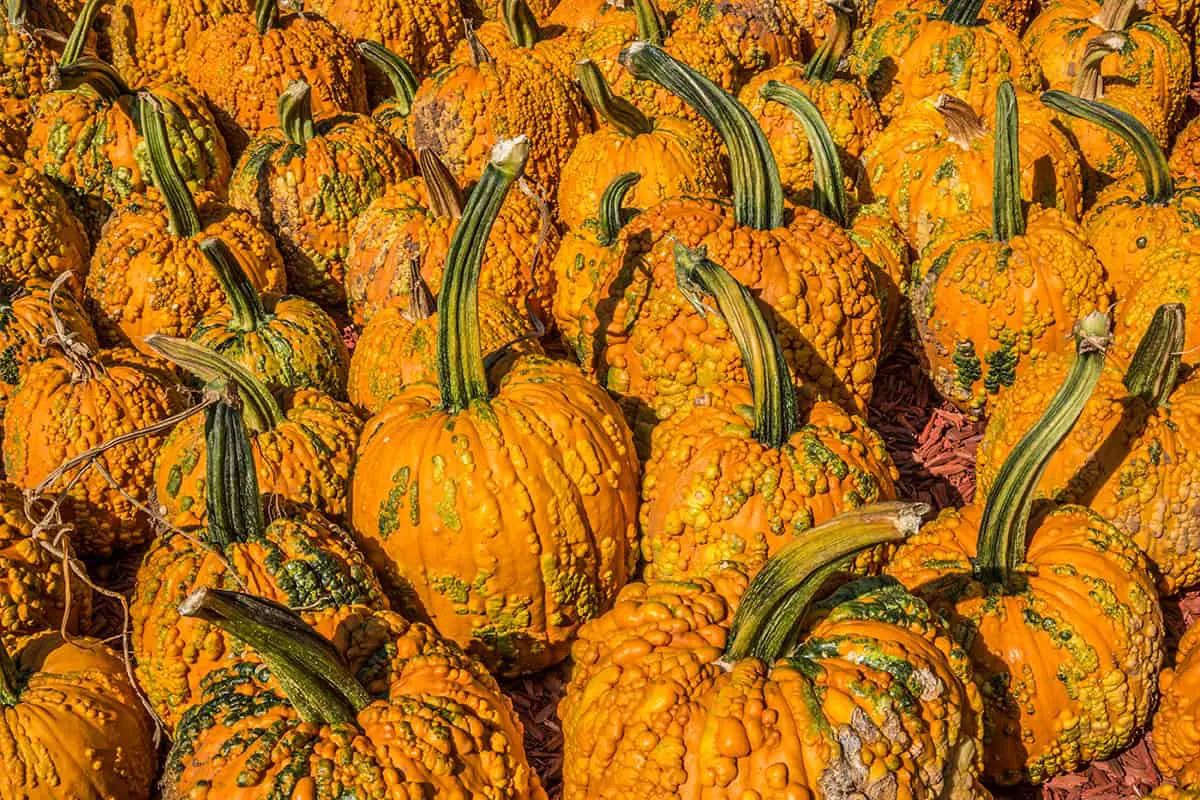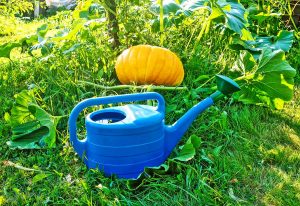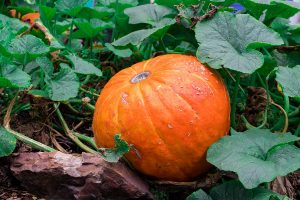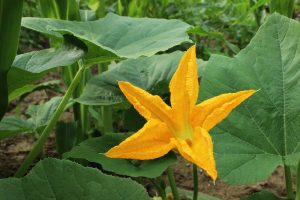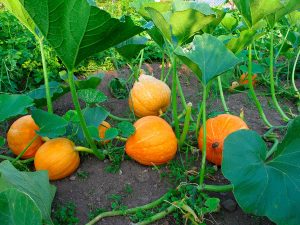Unusual-looking pumpkins can make wonderful additions to quirky fall displays in a range of settings. If you’re looking for something a little different to the norm, consider these unusual pumpkin varieties.
Table of Contents
Flat Pumpkin Varieties
Flat pumpkin varieties produce fruits that look as though their height has been compressed or squashed. These are really great for creating a fairytale-style fall decor, and they look especially good when stacked on top of each other in descending sizes.
Fairytale
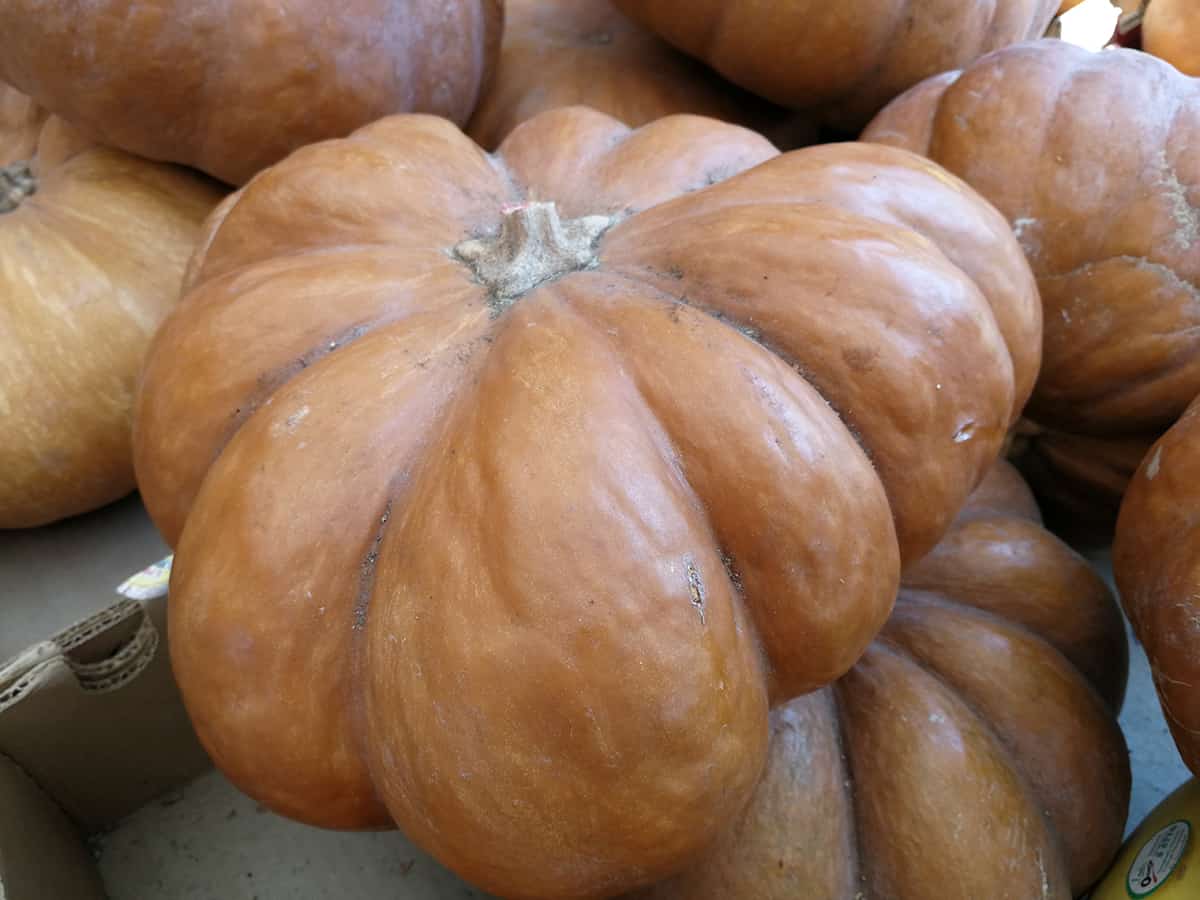
The ‘Fairytale’ pumpkin, scientifically known as Cucurbita moschata ‘Fairytale,’ is a unique and decorative pumpkin variety known for its distinctive appearance. It also goes by the names Musquée de Provence, Moscata di Provenza, and Castilla squash. ‘Fairytale’ pumpkins are easily recognizable by their flattened, deeply ribbed shape and vibrant reddish-orange color.
They have a flattened, squat appearance with deep furrows running from the stem to the base, which gives them a whimsical and somewhat fairytale-like look, hence the name. The skin of ‘Fairytale’ pumpkins is thick and hard, making them excellent for decorative purposes. Their skin is also smooth and glossy, adding to their visual appeal.
These pumpkins typically range in size from 10 to 15 pounds, although they can sometimes grow larger. The flesh of ‘Fairytale’ pumpkins is sweet, fine-textured, and flavorful. While they are edible, they are often grown more for ornamental purposes and are not as commonly used for cooking as some other pumpkin varieties.
Cinderella

The ‘Cinderella’ pumpkin is also known as ‘Rouge Vif d’Etampes‘. It is an heirloom pumpkin variety that is named after the fairy tale character Cinderella because it bears a striking resemblance to Cinderella’s carriage. It is known for its unique shape and vibrant color.
These pumpkins are deeply ribbed and flattened, with a shape that somewhat resembles a squat, round cheese wheel. The skin is a bright, reddish-orange color and is thick and shiny. ‘Cinderella’ pumpkins are versatile and can be used for both decorative and culinary purposes.
They are often used in fall displays, seasonal decorations, and as centerpieces. Their flavorful flesh makes them a great choice for making pies, soups, and other pumpkin dishes.
Jarrahdale
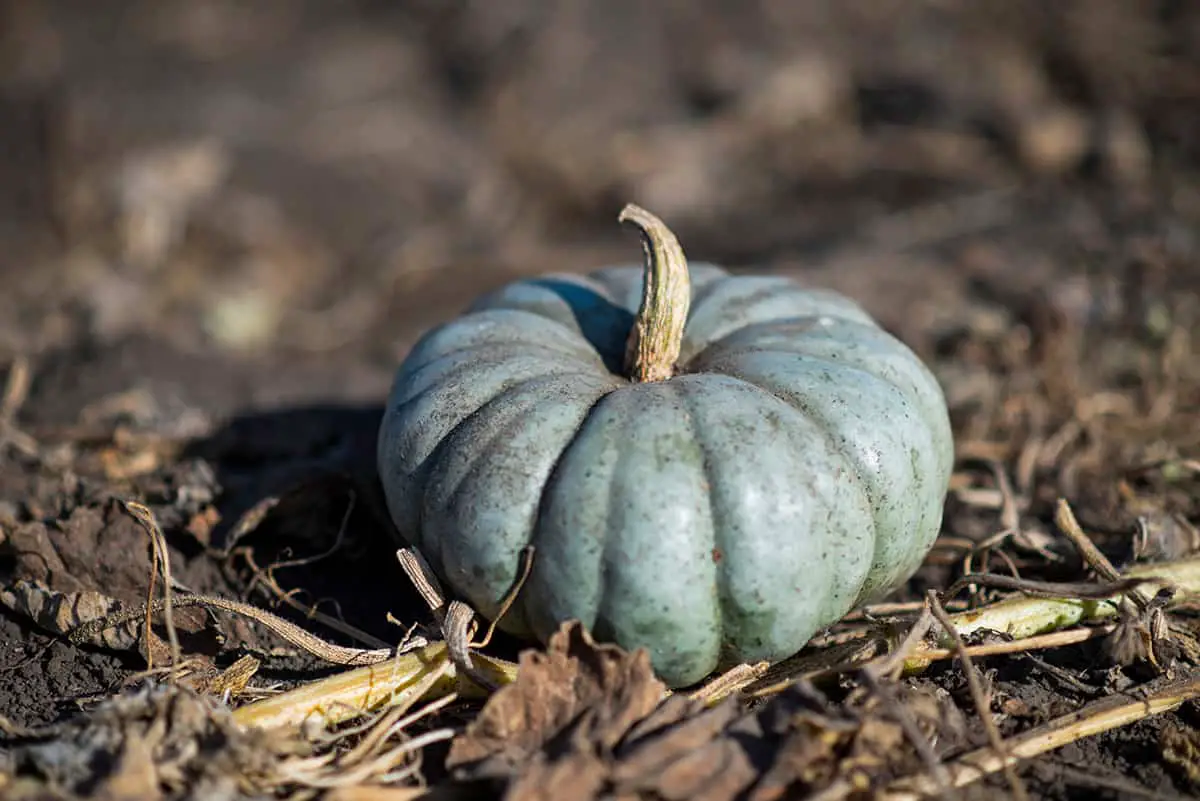
‘Jarrahdale’ pumpkins are instantly recognizable by their distinctive, slate gray-blue skin. They have deep ribbing and a flattened, squat shape with a slight ridge around the stem.
The skin can vary in color from gray-blue to greenish-gray. These pumpkins typically range in size from 6 to 12 pounds, and they have a relatively thin but tough skin that is not typically used for culinary purposes. However, the striking blue-gray color and unique shape make them highly desirable for decorative purposes, including fall displays and centerpieces.
Creepy Pumpkin Varieties
If you want to make a creepy display for your fall or Halloween decorations, then these unusual pumpkin varieties make for a great choice. Creepy pumpkins usually feature warts, callouses, and other unsightly aspects that make them ugly.
Marina di Chioggia
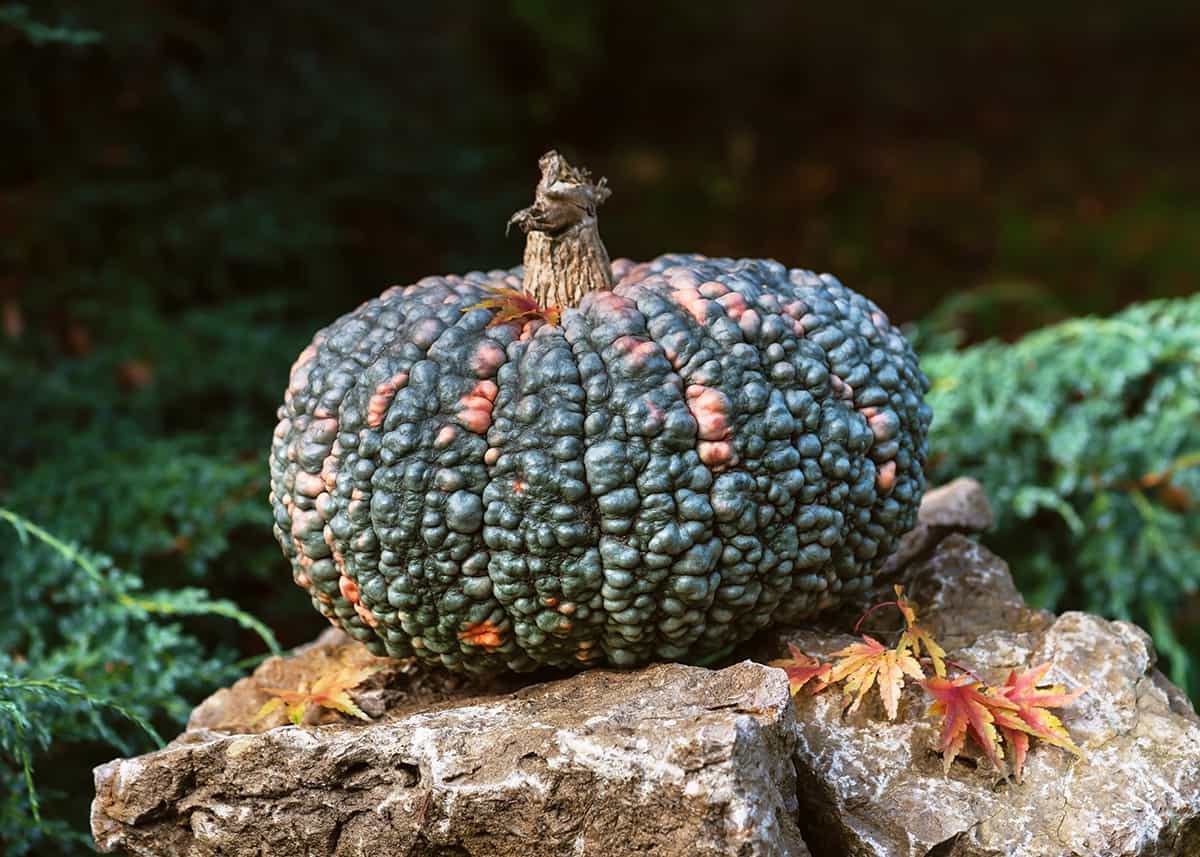
Marina di Chioggia is an Italian heirloom pumpkin variety known for its unusual appearance, excellent flavor, and suitability for various culinary purposes. This pumpkin, sometimes simply referred to as ‘Chioggia,’ is believed to have originated in the coastal town of Chioggia in the Veneto region of Italy.
Marina di Chioggia pumpkins have a rough and bumpy outer skin that ranges in color from deep green to bluish-gray. Their irregular, warty surface gives them a unique and ornamental appearance, making them a popular choice for fall decorations. The shape is typically round to slightly flattened, and they can be quite large, with some specimens weighing 15-25 pounds.
Marina di Chioggia pumpkins can be used to prepare a wide range of dishes, including soups, stews, risottos, pies, muffins, and roasted vegetables. Their sweet and creamy flesh makes them a popular choice for making pumpkin puree.
Knucklehead
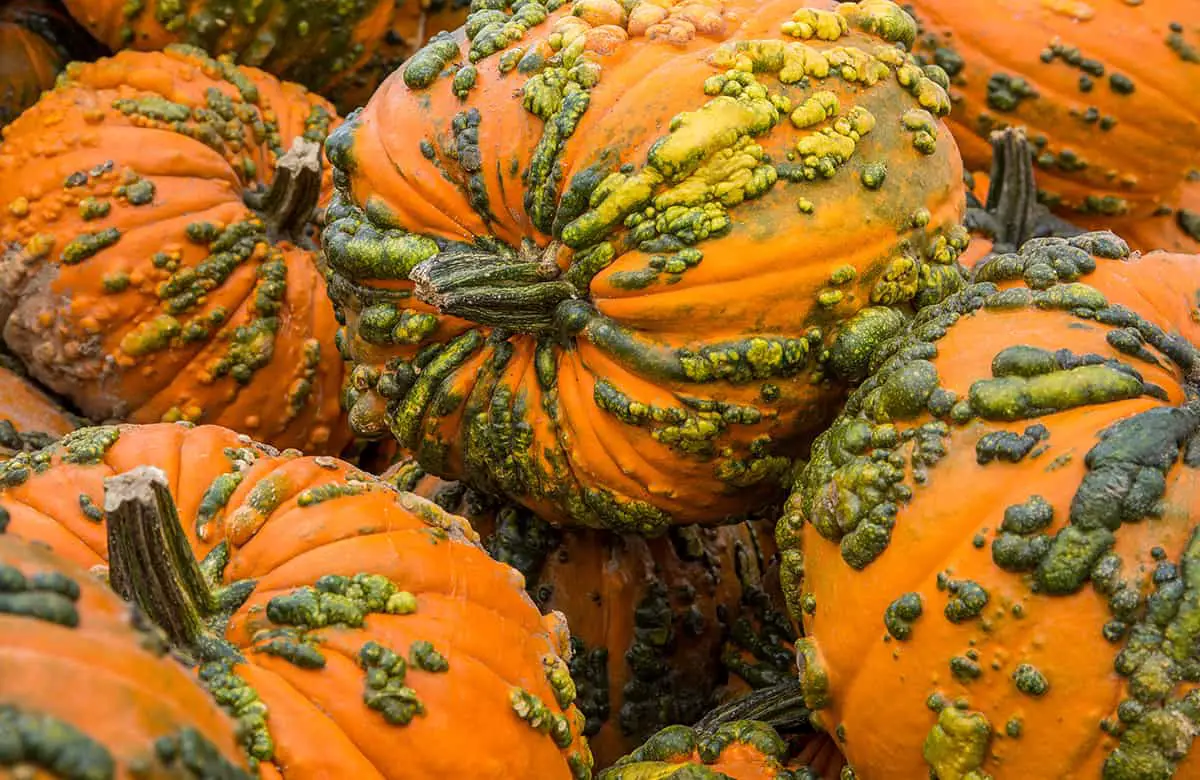
‘Knucklehead’ pumpkins are known for their unique appearance, which makes them a popular choice for adding a spooky and whimsical element to Halloween and fall displays. ‘Knucklehead’ pumpkins are named for their rough, bumpy, and knobby skin. These warty protrusions cover the surface of the pumpkin, giving it a gnarled appearance.
The skin color is typically dark orange, making the warts stand out even more. They are usually medium to large-sized pumpkins, making them suitable for carving, decorating, and culinary purposes.
Turk’s Turban
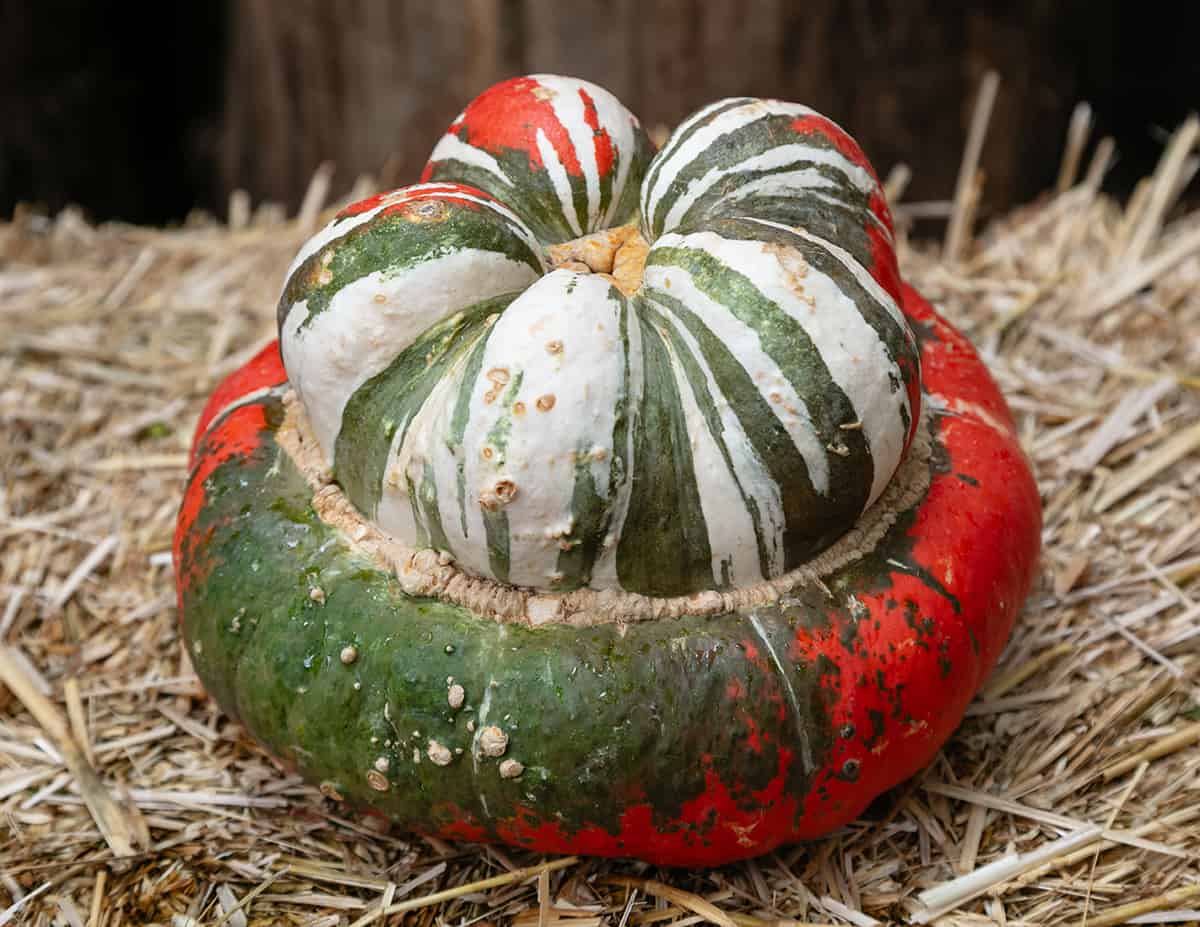
The ‘Turk’s Turban’ pumpkin, also known as ‘Turban Squash,’ is a visually striking and unique winter squash variety rather than a true pumpkin. The most distinctive feature of the ‘Turk’s Turban’ squash is its shape, which resembles a turban or a crown. The squash has a flat, wide base and a bulbous, turban-shaped top with multiple pronounced ridges and colorful skin.
The skin can have a mix of colors, including bright orange, deep green, white, and sometimes even red or yellow. The top of the squash typically has a knobby or warty appearance. While ‘Turk’s Turban’ squash is primarily grown for its ornamental value, it is also edible and can be used in cooking. The flesh of this squash is typically sweet and has a nutty flavor.
Galeux d’Eysine
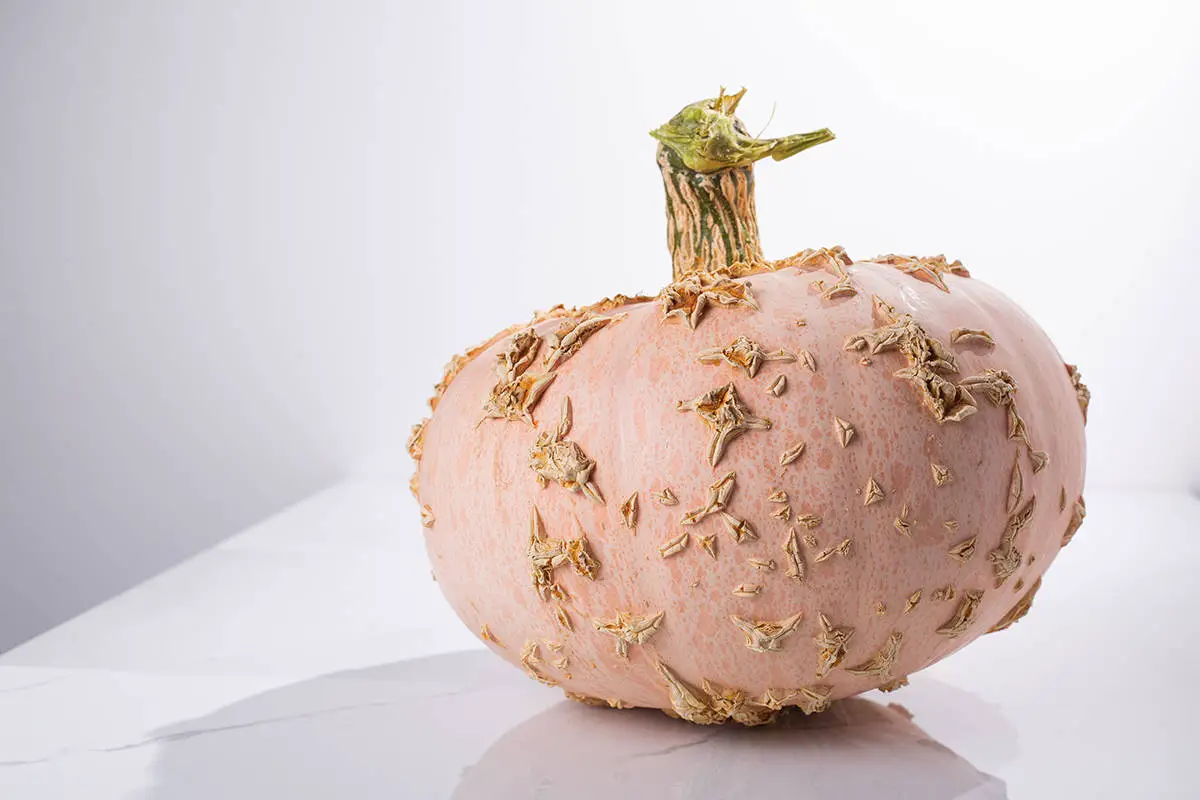
Galeux d’Eysines is a unique and visually striking variety of pumpkin that hails from the Bordeaux region of France. This heirloom pumpkin, also known as ‘Peanut Pumpkin’ is renowned for its distinctive appearance and excellent culinary qualities. Galeux d’Eysines pumpkins are instantly recognizable due to their unusual, bumpy, and wart-like growths or “warts” on their skin.
These warts are typically light tan or beige in color and cover the entire surface of the pumpkin. The base color of the skin is often a muted salmon or pinkish hue, making it look even more unique. The shape of this pumpkin is typically round to slightly flattened. These pumpkins have a sweet and flavorful flesh that is excellent for cooking and baking. The orange-yellow flesh is smooth, dense, and has a rich, nutty flavor.
Shishigatani
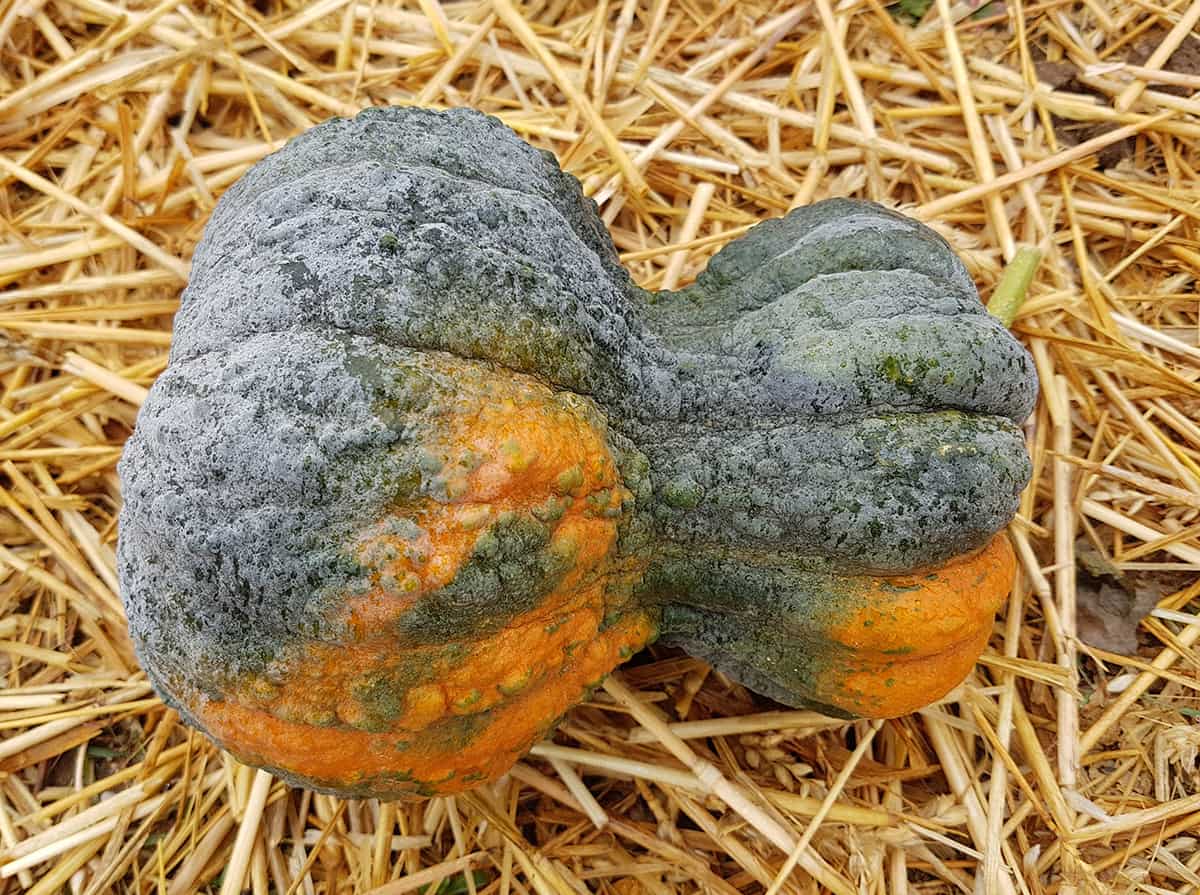
‘Shishigatani’ is a traditional Japanese pumpkin variety known for its unusual appearance, delicious flavor, and historical significance. They are typically small to medium-sized, roughly round in shape, and characterized by deeply ribbed or wrinkled skin. The skin color varies but is often mottled green with yellow or orange streaks.
This unique appearance makes them easily recognizable. ‘Shishigatani’ pumpkins are commonly used in Japanese cuisine for making various dishes, including tempura, soups, stews, and desserts. The flesh is smooth, dense, and has a rich, almost chestnut-like taste.
‘Shishigatani’ pumpkins have a long history in Japan, dating back to the Edo period of the 17th to 19th centuries. The name is derived from the Japanese words “shishi”, meaning lion, and “gatani”, which is a container for offerings. This name reflects the pumpkin’s resemblance to a lion’s mane and its traditional use in offerings.
Brightly Colored Pumpkin Varieties
Brightly colored pumpkins stand out from the usual orange norm, giving them an alternative look and making them a fun choice for unusual or vibrant displays.
Blue Prince
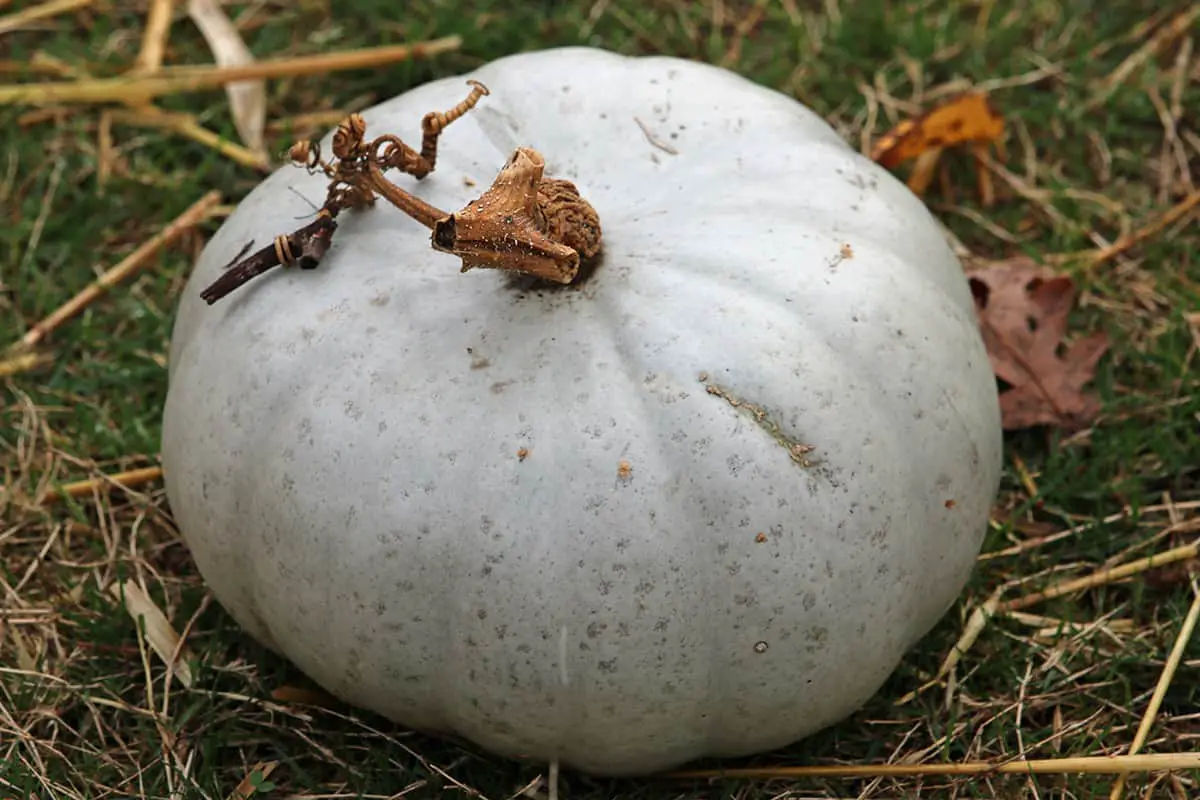
Blue Prince pumpkins are a beautiful blue color, with a flattened shape and lightly ribbed, smooth skin. The bright orange, non-stringy flesh of these fruits contrasts heavily against the blue skin for a bold impact when they are cut open for eating or decoration.
Blue Prince pumpkins are popular for their ornamental beauty, but they are also very flavorful and have a smooth consistency that works especially well in soups and purees.
Mellow Yellow
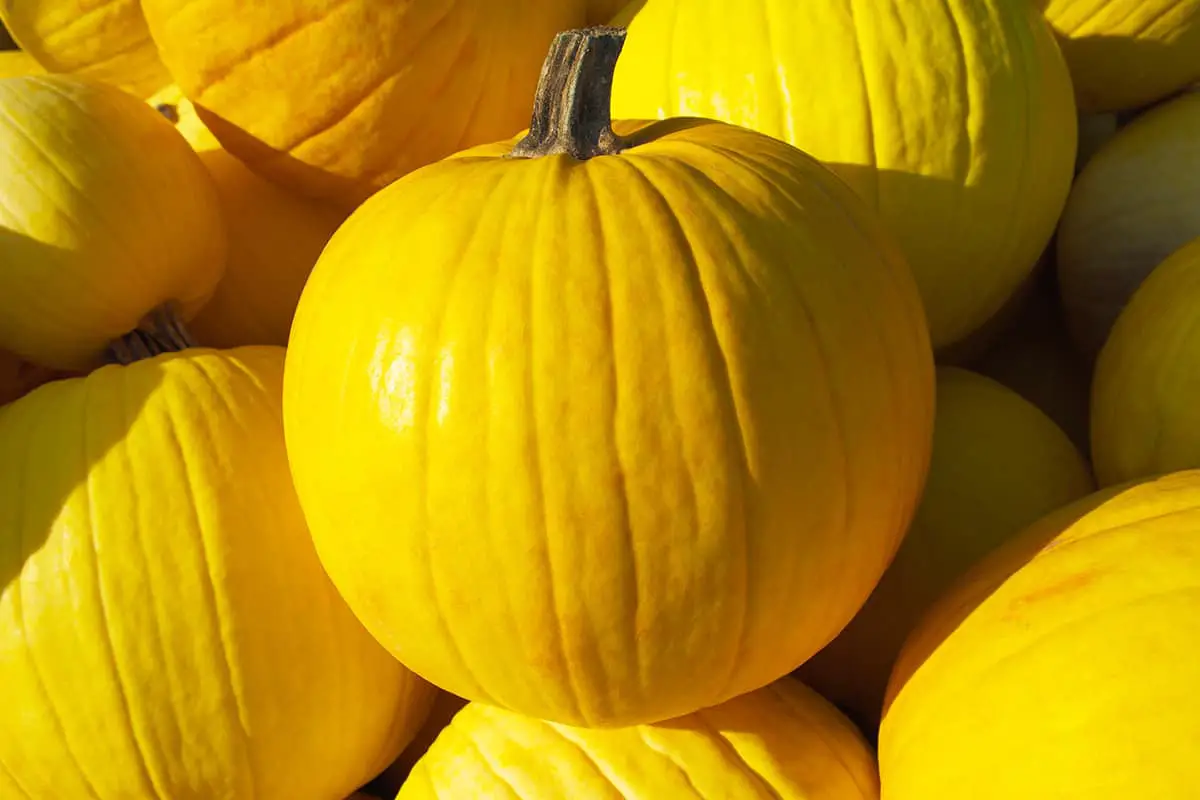
Mellow Yellow pumpkins are a variety of the Cucurbita pepo species. They are large in size, with an even, round shape and subtle vertical ribbing. They can be recognized by their vibrant, bright yellow skin and creamy flesh.
Mellow Yellow pumpkins can be used for ornamental and culinary purposes. The flesh has a sweet and mild flavor that works well in casseroles.
Cushaw Green
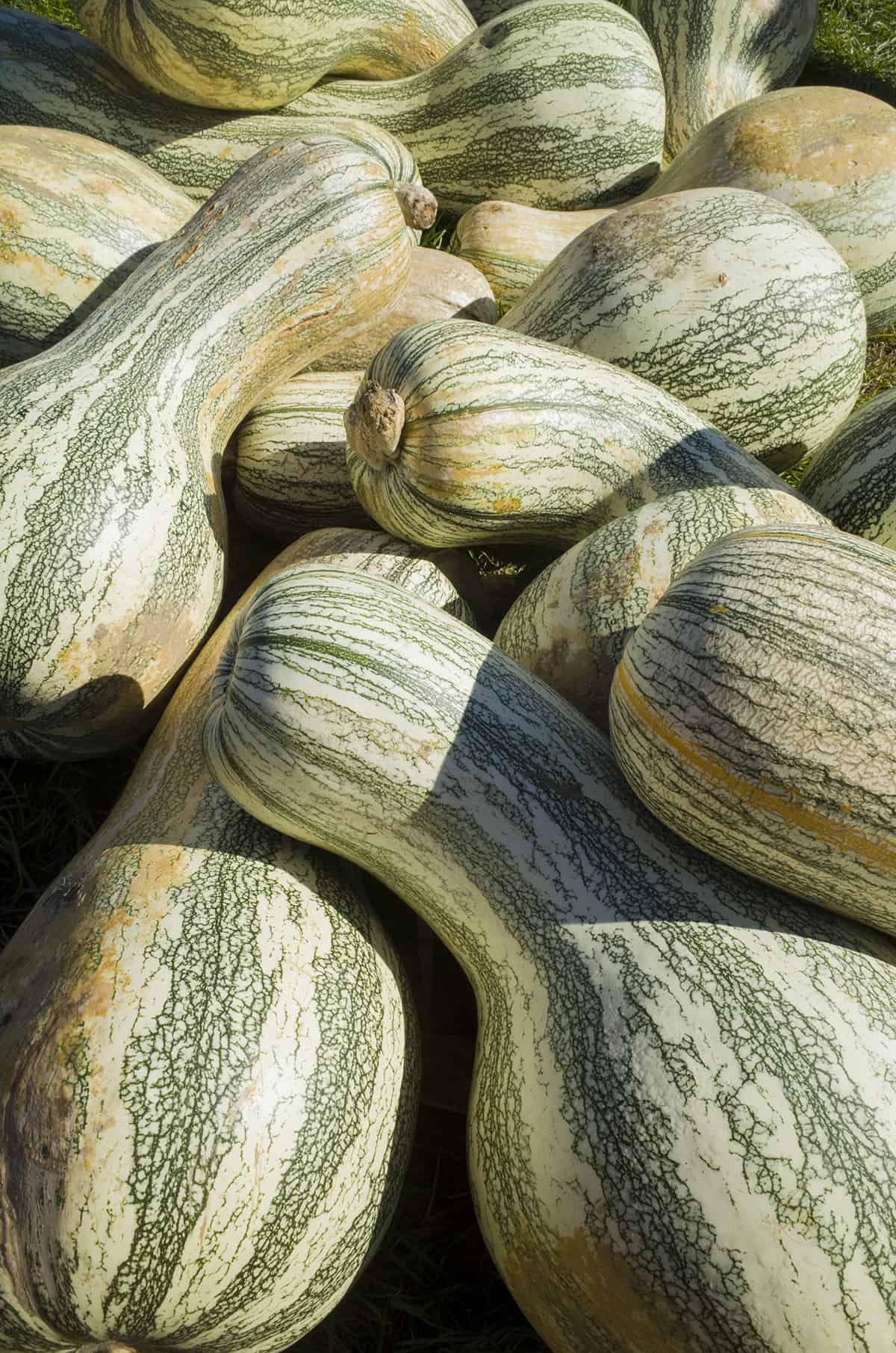
These large, unusually shaped pumpkins have green skin with creamy striping. They are light-bulb shaped, with a plump bottom and slender neck.
Cushaw Green pumpkins are large and highly ornamental, but they are also grown for their flesh, which is exceptional when cooked in pumpkin pies. Each Cushaw Green vine will usually produce between 2 to 4 pumpkins.
Casper
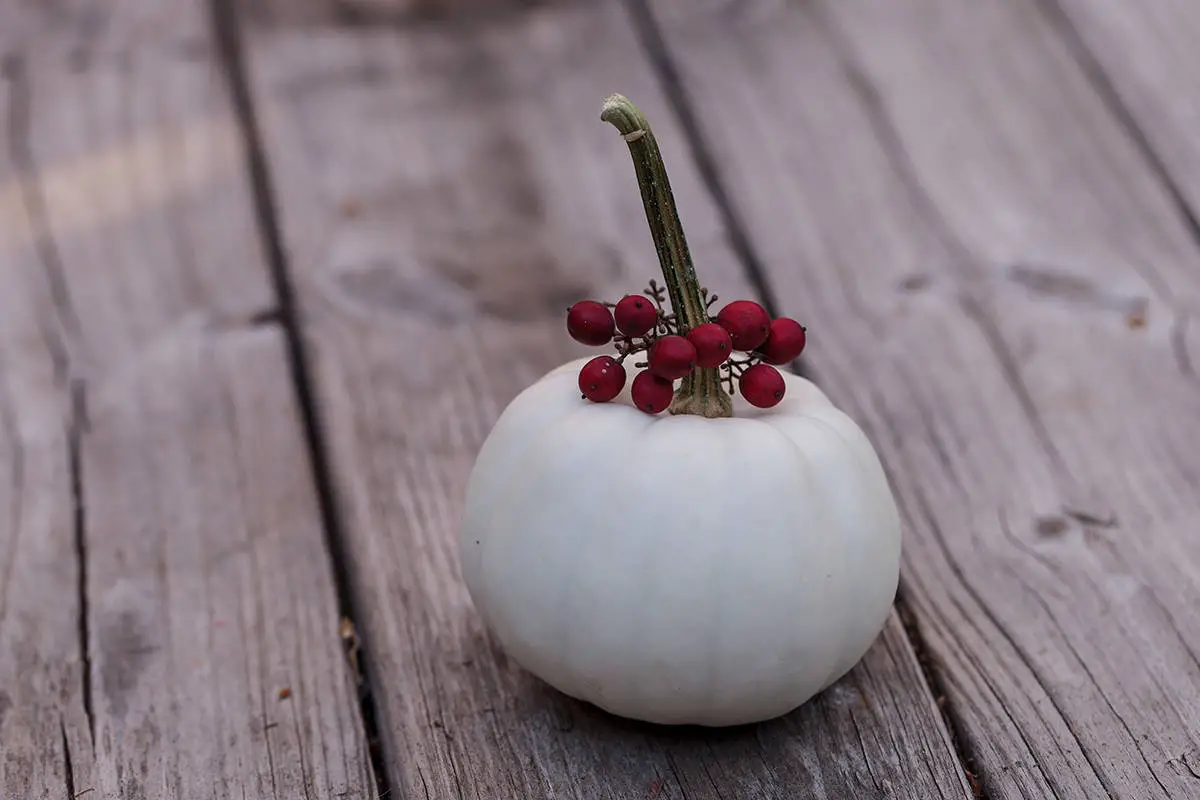
The ‘Casper’ pumpkin variety is known for its unusual coloring. ‘Casper’ pumpkins resemble traditional orange pumpkins in shape and size, however, they are distinguished by their ghostly white color. Use these white pumpkins as a focal point amongst a sea of orange pumpkins during the Halloween season.
‘Casper’ pumpkins are most often used for decorative purposes, where they can be carved to create ghostly or spooky designs. They can also be used in culinary applications, similar to other pumpkin varieties.
Flat White Boer

The ‘Flat White Boer’ pumpkin is a relatively uncommon variety known for its unique appearance. These are not as widely available as more common pumpkin varieties, but they can often be found at specialty or heirloom seed suppliers. As the name suggests, the ‘Flat White Boer’ pumpkin is typically flat or slightly flattened in shape.
It is known for its unusual pale white or creamy color, which sets it apart from the more common orange pumpkins. The skin is smooth, and the pumpkin is medium in size.
